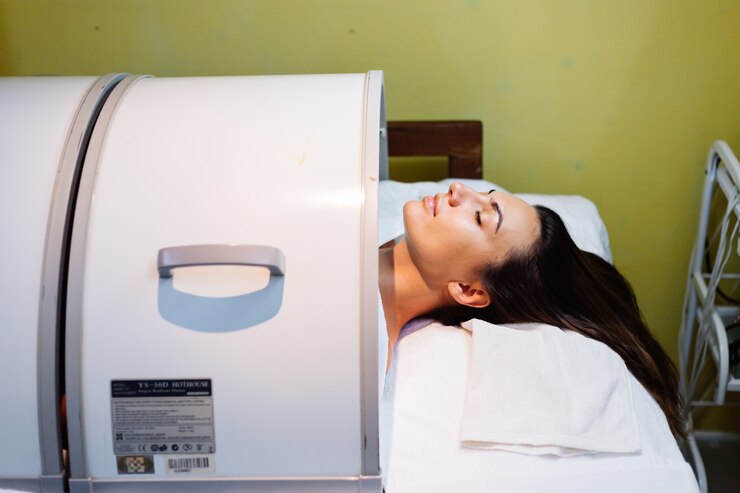When it comes to recovery methods for athletes, both ice baths and Hyperbaric Oxygen Therapy (HBOT) have gained attention for their potential benefits.
Each method offers distinct mechanisms to aid recovery, but their effectiveness can depend on the specific needs and goals of the athlete.
1. Ice Baths: The Basics
Ice baths, also known as cold-water immersion, involve submerging the body (or parts of it) in cold water (typically around 50-59°F or 10-15°C) for a period of time, usually 10-15 minutes.
Benefits of Ice Baths:
- Reduced Inflammation: The cold temperature constricts blood vessels, which can help reduce inflammation and swelling caused by microtears in muscles after intense workouts.
- Pain Relief: Numbing effects from the cold can reduce pain perception, providing immediate relief.
- Enhanced Recovery Time: Athletes often use ice baths to recover more quickly between training sessions or competitions.
Drawbacks of Ice Baths:
- Limited Evidence on Long-Term Benefits: While ice baths may reduce soreness in the short term, there is limited evidence on their long-term benefits for muscle adaptation and growth.
- Possible Negative Effects on Muscle Strength: Some studies suggest that cold exposure might blunt the inflammatory response necessary for muscle repair and growth, potentially reducing strength gains.
2. Hyperbaric Oxygen Therapy (HBOT): The Basics
HBOT involves breathing 100% pure oxygen in a pressurized chamber. This treatment increases oxygen delivery throughout the body, which may enhance the healing of damaged tissues.
Benefits of HBOT:
- Improved Oxygen Delivery: The pressurized environment increases the amount of oxygen your blood can carry, potentially speeding up the recovery of injured tissues.
- Reduced Inflammation and Swelling: Increased oxygen levels can help to reduce inflammation and swelling, which may be particularly beneficial for injuries like muscle strains or sprains.
- Enhanced Healing: HBOT is believed to stimulate collagen production, new blood vessel formation, and the growth of new tissue, which could help repair muscle damage.
Drawbacks of HBOT:
- Cost and Accessibility: HBOT is generally more expensive and less accessible than ice baths, requiring specialized equipment and trained professionals.
- Limited Evidence for Certain Uses: While HBOT has shown promise in treating certain conditions like non-healing wounds, the evidence for its effectiveness in routine sports recovery is still being researched.
Which is Better for Athletes?
The choice between ice baths and HBOT depends on various factors:
- Type of Recovery Needed: For immediate post-exercise recovery and to reduce acute inflammation and pain, ice baths might be more effective. For deeper tissue healing, particularly for injuries, HBOT may offer more benefits.
- Cost and Convenience: Ice baths are more affordable and accessible than HBOT, making them a more practical option for most athletes.
- Training Goals: If the goal is to build muscle mass and strength, ice baths might not be ideal due to their potential impact on the body’s adaptive processes. On the other hand, HBOT might be more suitable for recovery without affecting muscle growth.
Conclusion
Both ice baths and HBOT have their merits, and the best method for an athlete can depend on individual circumstances, goals, and available resources.
A combination of these recovery methods, tailored to specific training phases or injury types, could provide a comprehensive approach to optimize athletic recovery.
